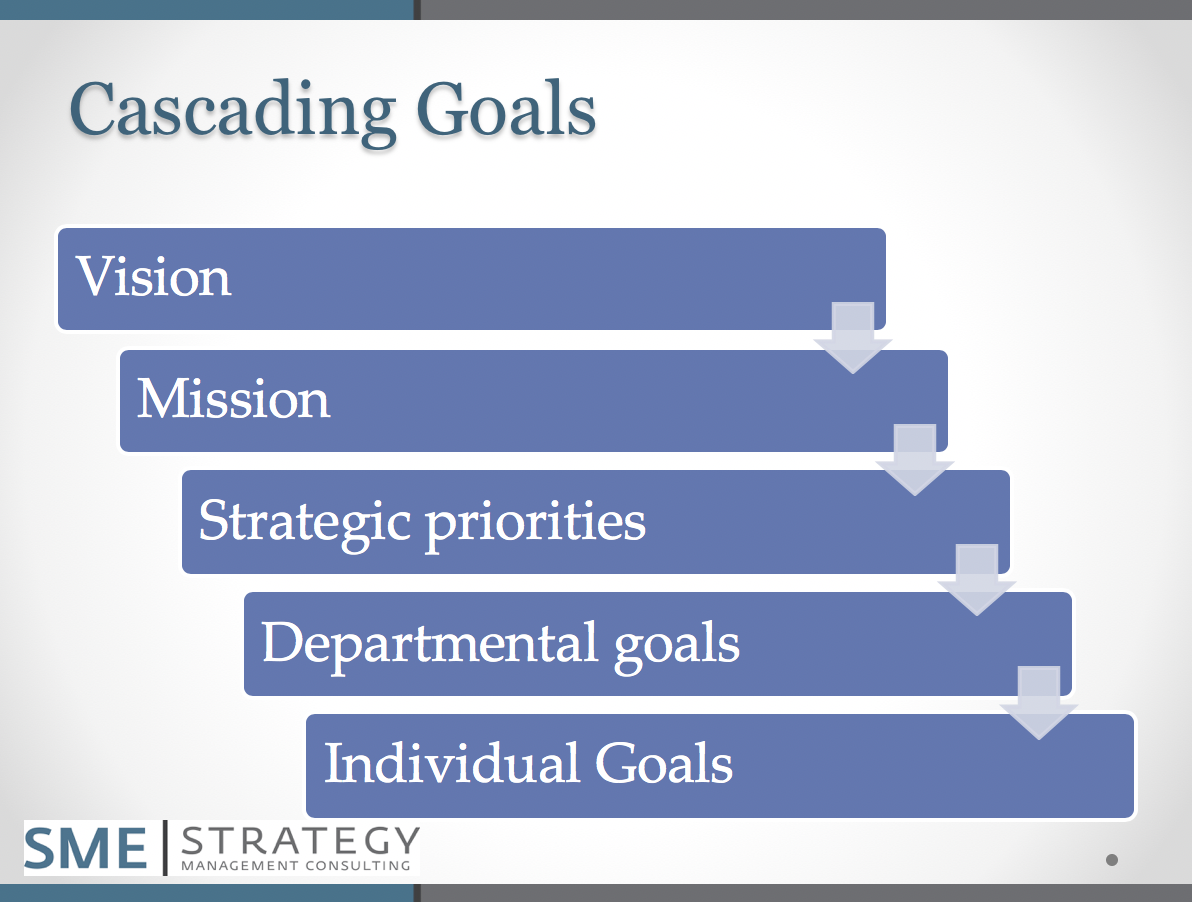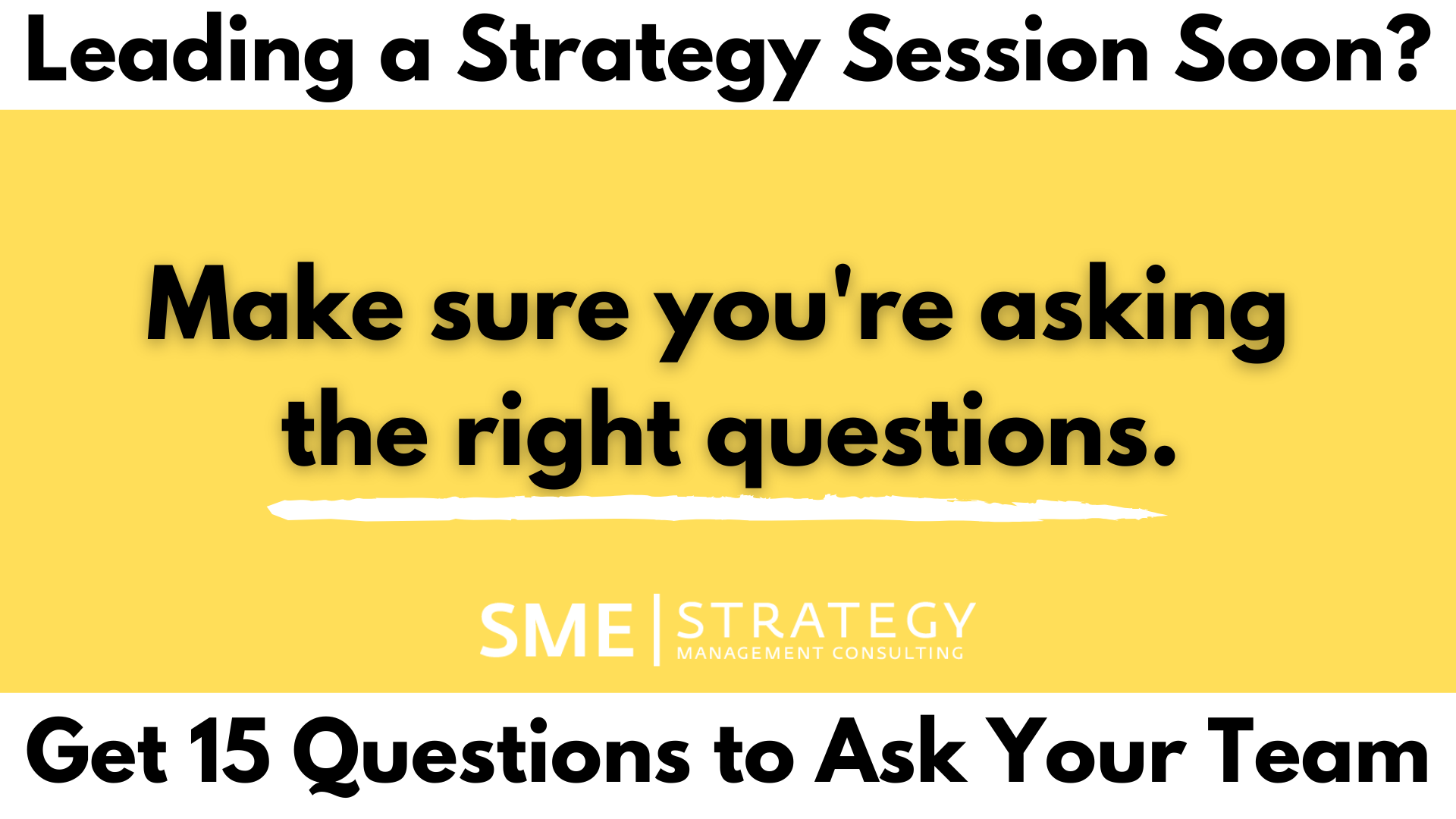How to Improve Accountability When Implementing Your Strategic Plan

Have you ever had a challenge with measuring the success of your strategic plan or the performance of the individuals on your team? The issue could be that your action plans don't contain measurable goals, or that the strategies and tactics to achieve those goals are unclear themselves.
If you're looking for a strategic planning facilitator to help create and implement your plan, we can help. Check out our service offerings here:
You may have heard of SMART Goals:
- Specific
- Measurable
- Achievable
- Realistic
- Time bound
Or FAST Goals:
- Frequent
- Ambitious
- Specific
- Transparent
But, regardless of the chosen approach, you and your team will need to assign people or teams, along with clear beginning and end dates to your goals and tactics before you can be successful with implementation.
Starting with the End in Mind:
As we have shared in past media (like this video), everything you do in your organization should be derived from your vision and your strategic priorities. If your vision and strategic priorities are clear, the actions that are needed to make that happen will also be clear and actionable.
How do you make your vision or strategic priorities clear and actionable?
Make sure you can define and measure them.
This will transform your action items from qualitative to quantitative, from conceptual to specific, and from confusing to clear.
For example:
Unclear and non-measurable: We want to be the best company in our sector
Clear and measurable: We want to be the ranked #1 on Google for these three specific keywords by this specific date
OR:
Unclear and non-measurable: We want to be a great place to work
Clear and measurable: We want our team to rate our culture an 8/10 or higher on their quarterly surveys
Once you know the targets you’re aiming for, it’s easier for you and your team to take the actions that will get you there. You can then specifically measure if the actions were taken, and if they were sufficient in terms of both quality and in quantity.
Watch: The Cost of Not Accomplishing Your Strategic Plan
Understanding Measurements:
When setting metrics for goals and tasks, it's important to understand leading and lagging indicators.
Leading indicators are activity based and can actively be impacted, while lagging indicators are the result of these activities and are an output from the activity itself.
These can be viewed from the perspective of the activity that needs to be done, the outcome or the impact that it will have on the specific process, or you can look at the outcome from the perspective of the organization.
Depending on the type of goal or measurement, there will be a different time frame attached to it.
These may be a one-time activity in the short term, such as:
-
To hire new sales director within four months, by DATE
-
To create a marketing plan and present it to the leadership team
It might be better set for a medium term, such as:
-
To have all customer reviews be a 5/5 within 18 months
-
To have 15 training sessions (One every 6 weeks with front line staff) by DATE
-
To increase gross revenue from 7 to 14 million by DATE
Or, it might be measured on an ongoing basis, such as:
-
To visit 25 customers per month, every month
-
To have 100% staff accountability for filling out weekly merchandise report
Creating a balanced set of strategic goals allows you to make progress immediately to energize your staff, while also having larger ambitions that can the entire organization can rally around (typically, those are financial or customer focused goals).
>> Watch below: How to use strategy dashboards to track & monitor your strategic plan
Cascading Your Goals:
Now that your organization has set its high-level vision and strategic priorities (with accompanying targets), now is the time to cascade these goals to align them with the rest of the organization.
Using a balanced approach to goal setting, it’s safe to assume that your organization has a mix of goals that include: financial goals, quality or customer service goals, process or organizational capacity goals, and perhaps some goals that impact your team or culture.
If you want to effectively develop action plans for your team, you want to make sure they understand:
- How their work, activities and goals align with the strategic priorities of the organization
- How their performance will be measured against the execution of the plan
In other words, they need to understand how the organization is keeping score and what things they can do (or are expected to be doing) in order to make progress against the high-level organizational objectives.
This concept is known as Cascading goals from the organizational level to the individual level:

Once you have your organizational goals set out from your leadership team or board, the next step is to gather different departments together to create their own goals (in terms of lagging indicators) and strategic action plans (in terms of leading indicators) to move the plan forward.
Rather than aiming for perfection, aim for adherence to process. Get your team into the habit of setting monthly work plans for themselves that are aligned with the departmental goals. Create a process for managing the strategic work alongside the operational work (the day to day). If you do the strategic work well, it will create greater capacity for the rest of the work to be done.
Need help with your strategic planning process? A facilitator can help:
Developing Accountability:
You could delegate work tasks to your team, and micromanage them to get it done. However, if you want your team to be motivated and buy into the organization's strategy, have them work to develop their own strategic accountabilities and work together to set clear and actionable targets that they can agree to taking ownership for (rather than imposing deadlines and goals upon departments or people that they may not feel are reasonable).
When we work with clients, we recommend using software like Cascade to monitor and manage work plans and progress around goals. We have found that project management tools like Basecamp also work great for specific tactics and to-do lists, but are less effective for measuring goals and priorities.
Regardless of how you choose to implement your strategy, I invite you to look at goals as promises that your team members make to you and the rest of the team. They said they were going to do it, and it’s up to them to get it done.
Be a leader in supporting your people through the execution of their plans, not a micro manager. It will be much easier on them, and will take less time for you. You can delegate tasks, but if you let people take on the goals and tactics themselves, they will be much more committed to the success of the vision, and it will create many more opportunities for them to contribute to the plan - many more than you could think of delegating, and with a higher level of engagement and effectiveness.
As you’re walking your team through the process of executing your strategic plan:
-
Start with the end in mind, and make sure you have clear goals and measures of success
-
Cascade the goals and make sure there’s alignment with the organizational goals and the goals of the individual departments
-
Keep people accountable, and make sure that people are clear on what they are taking on as part of the plan. Have them commit to a time when they are going to get it done
It is important to train and develop your team so that they get used to successful implementation. It might not happen right away, but it’s an investment that you can make now to build a strong team that will help you accomplish your organization's vision.
Want to Improve your team's accountability now?
Contact us to learn more about our strategic planning facilitation and strategy implementation services to support your team in reaching its aligned One Destination.






